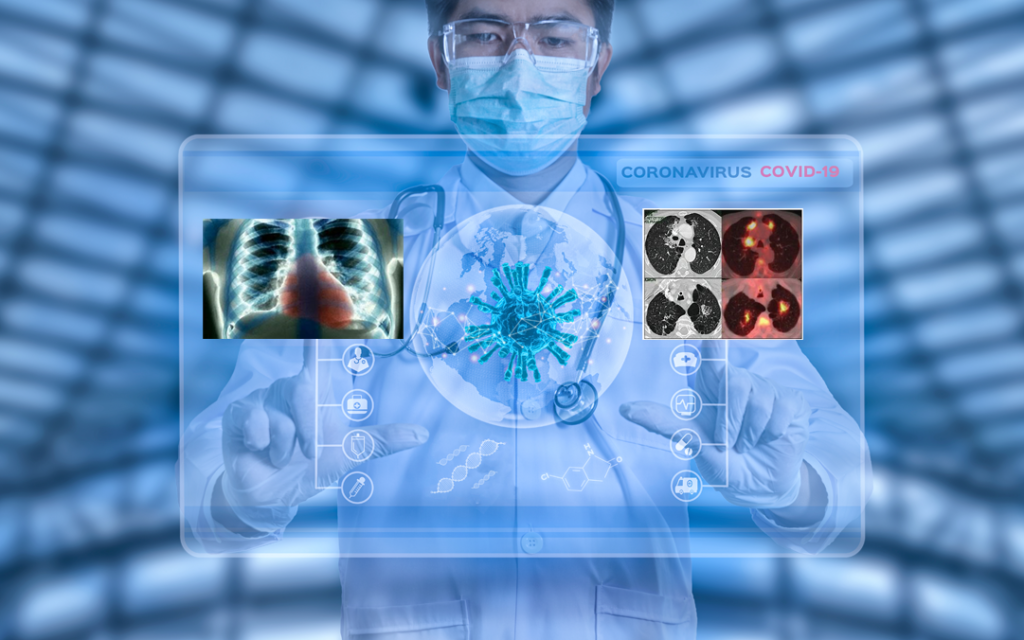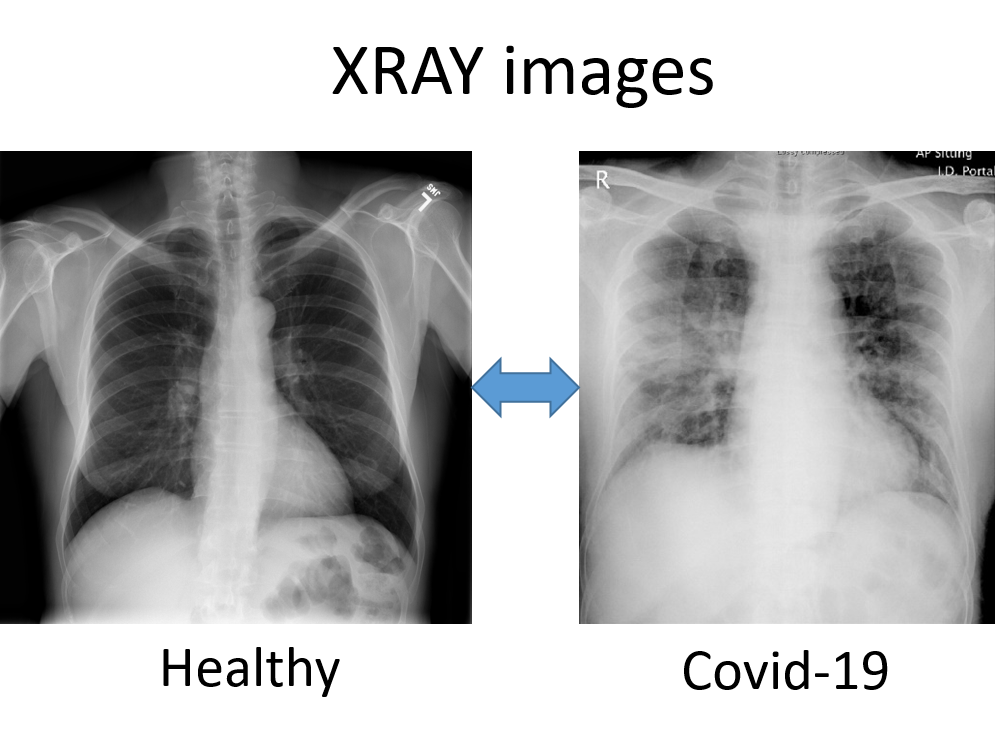Project Description
CovAIR: Fighting SARS-CoV-2 using Artificial Intelligence and Radiomics
Future SARS-CoV-2 virus outbreak covid-XX might possibly occur during the next years. However the pathology in humans is so recent that many clinical aspects, like early detection of complications, side effects after recovery or early screening, are currently unknown.
In spite of the number of cases of covid-19, its rapid spread putting many sanitary systems close to a collapse has hindered proper collection and analysis of the data related to covid-19 clinical aspects.
CovAIR is an interdisciplinary initiative that integrates clinical research, with image diagnostics and the use of new technologies such as artificial intelligence and radiomics with the aim of clarifying some of SARS-CoV-2 virus open questions. In particular, CovAIR addresses 3 main points: 1) collection of standardize data including images, clinical data and analytics; 2) covid screening for its early diagnosis at primary care centers; 3) define radiomic signatures of covid evolution and associated pathologies for the early treatment of complications.
CovAIR is composed by two main subprojects: Covχ and Covγ.
Project GitHub : [link]
Paper : [link]
Collaborators:
ICS, IdiapGol, math4covid, Hospital Germans Tries i Pujol
CovAIR
Covγ
The objective of this project is the early diagnosis of pulmonary micro-thrombosis in patients with COVID-19 and its prognosis of evolution through computational analysis of perfusion SPECT-CT. Specifically, the project addresses the following objectives:(1) Standardized Database COVID-19; (2) Detection and degree of pulmonary micro-thrombosis in COVID-19; and (3) Prognosis of the evolution of patients with COVID-19 infection who present with Pulmonary Embolism and/or pulmonary micro-thrombosis.
Acknowledgments
The research leading to these results has received funding from the European Union Horizon 2020 research and innovation programme under the Marie Sklodowska-Curie grant agreement No 712949 (TECNIOspring PLUS) and from the Agency for Business Competitiveness of the Government of Catalonia.
This work was supported by Spanish projects RTI2018-095209-B-C21, FIS-G64384969, Generalitat de Catalunya, 2017-SGR-1624, SGR-2017-01597 and CERCA-Programme. Debora Gil is supported by Serra Hunter Fellow. The Titan X Pascal used for this research was donated by the NVIDIA Corporation.




